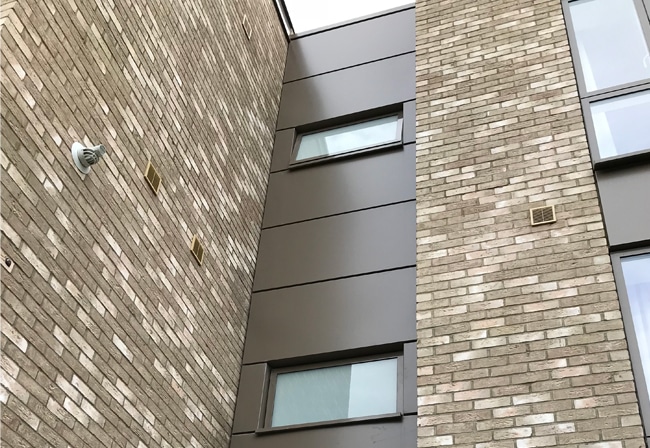What is Aluminium Cladding?
Cladding is a cost effective, established way to elevate the exterior of a building - providing a revitalising, eye-catching facade for all types of large scale builds. JB Products’ premium aluminium cladding is designed to do just this, ensuring an impressive, design for years to come.
PPC aluminium panels have a fire classification of A2-s1,d0. Anodised aluminium panels have a fire classification of A1.
Bespoke Building Cladding & Panelling
Whether you’re requiring simple panelling or a more ornate design, JB Products provides bespoke cladding for large scale constructions which tailor to all types of design requirements.
Why choose JB Products?
With decades of experience, JB Products prides itself on the quality of our products and customer service, supporting our customers throughout their journey with us to deliver a product which meets all expectations. Our experienced team works closely with architects and quantity surveyors to achieve this, from initial site surveys to the final installation.
In-house
manufacturing
JB Products manufactures our aluminium cladding in-house, aided by the latest CNC machinery, to meet project budgets and timelines everytime. We work in consideration of a quick and straightforward installation process, designing products around project specifications which are determined during initial consultations and site surveys.
PPC Aluminium can be manufactured in gauges between 1.20-10.00, with JB Products additionally working with both stainless and galvanised steel between 0.70-10.00mm.
Our design and manufacturing capabilities are further complemented by our accredited delivery and site services. JB Products supplies these services throughout the nation, with our transportation vehicles enabling us to safely deliver and install our products.
Our powder coated aluminium cladding meets A2-s1,d0 fire ratings for increased protection against fire.

FAQ's - Aluminium Cladding
Cladding is a fabricated layer which partially or completely covers the exterior walls of a building. Cladding may be made from timber, stone, metal - such as aluminium, or plastic - such as uPVC, to change the appearance of a building, provide additional weather protection, and even increase the insulating properties of a building.
Depending on the material used, cladding can be a cost effective way of changing or revitalising the face of a building - it maintains its integrity for longer than paint, and can provide a unique architectural design.
There are several advantages to using cladding on the exterior of a building; firstly, it can be cost-effective for large scale construction projects, particularly when using a cost-effective material such as aluminium. Cladding is durable, meaning its maintenance and maintenance costs are minimal. Cladding further protects a building from wear and tear, often caused by exposure to the elements, contributing to the cost effectiveness of cladding.
Cladding can increase the curb appeal and value of a property, providing a modern and fresh design.
Finally, cladding is quick and easy to install, however will require specialist equipment such as scaffolding or elevated platforms, for larger buildings.
The types of cladding can be defined by the material used. For instance, metal cladding, plastic or uPVC cladding, brick cladding, stone cladding, and glass cladding, are all common types of cladding for large scale builds.